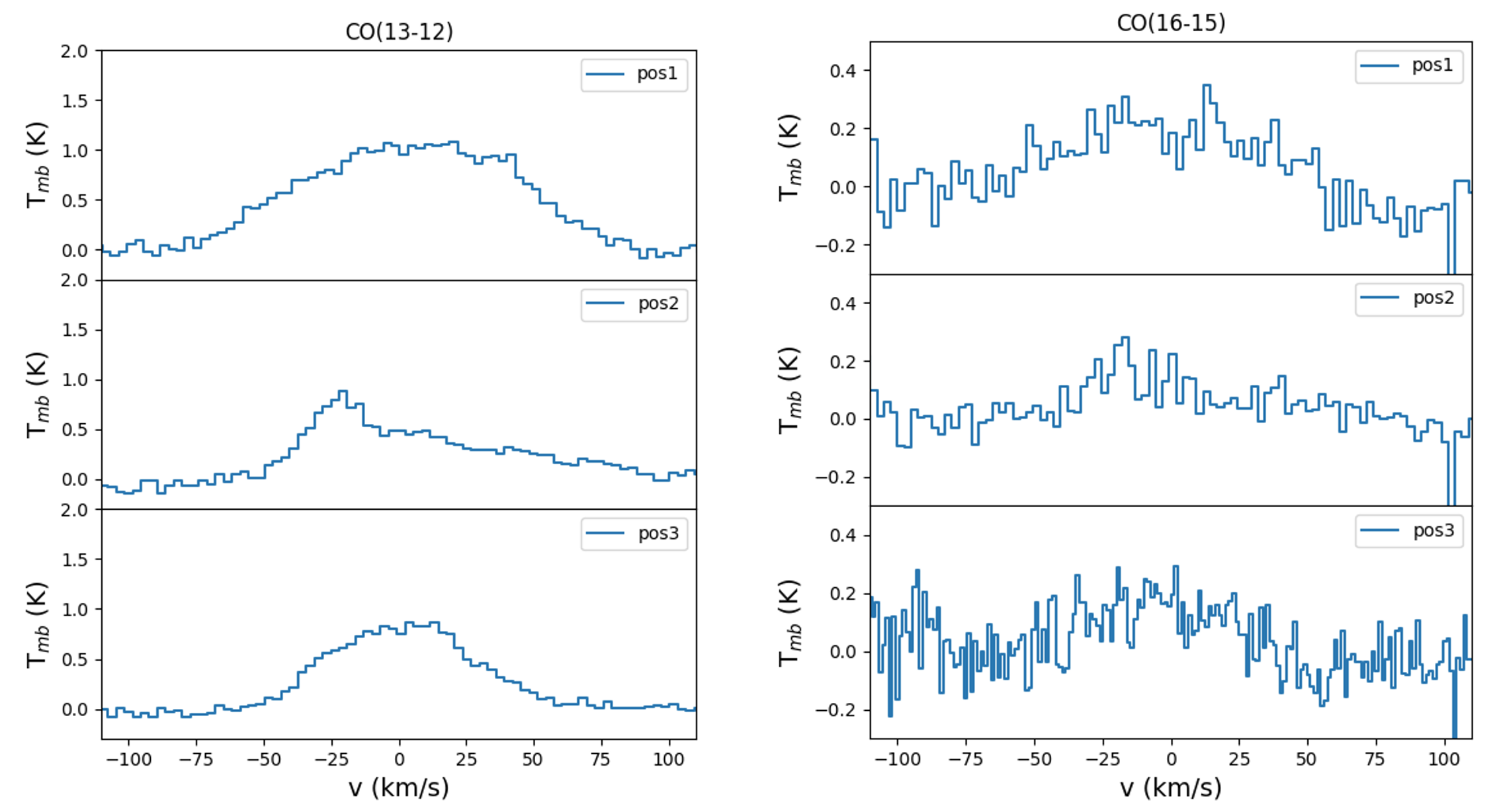The Milky Way Galactic center (GC) is the only laboratory in which we can spatially resolve the gas components and separate the physical processes that take place in galactic centers. The molecular gas of the GC is distributed in a torus structure, the circumnuclear disk (CND). A complete sample of CO J-transitions, from low-J transitions (e.g. J=2-1) to the high-J transition accessible only with GREAT (e.g. J=16-15), allows for the separation of different gas components, and for the identification and analysis of the physical properties and excitation processes present in the CND.
Requena-Torries et al. 2012 studied the CO excitation towards the northern and southern lobes of the CND, collecting CO transitions from low-J (IRAM data) up to the J=13-12 and J=16-15 (SOFIA/GREAT data). The authors showed that the CO spectral line energy distribution (SED) of these two positions need at least two gas components to be fitted, each of them with different physical properties. The high-J transitions have been fundamental to identify and characterize the two components.
The CO J=16-15 and J=13-12 spectra of three additional positions, with increasing galactocentric radius, have been observed with GREAT as part of project 01_0160. The analysis of these three positions could reveal the excitation gradient of the gas across the CND, and how the physical properties of the gas components and the local heating processes vary as a function of Galactocentric radius.

CO(13-12) spectra (left) and CO(16-15) spectra (right) towards the 3 positions observed with GREAT.